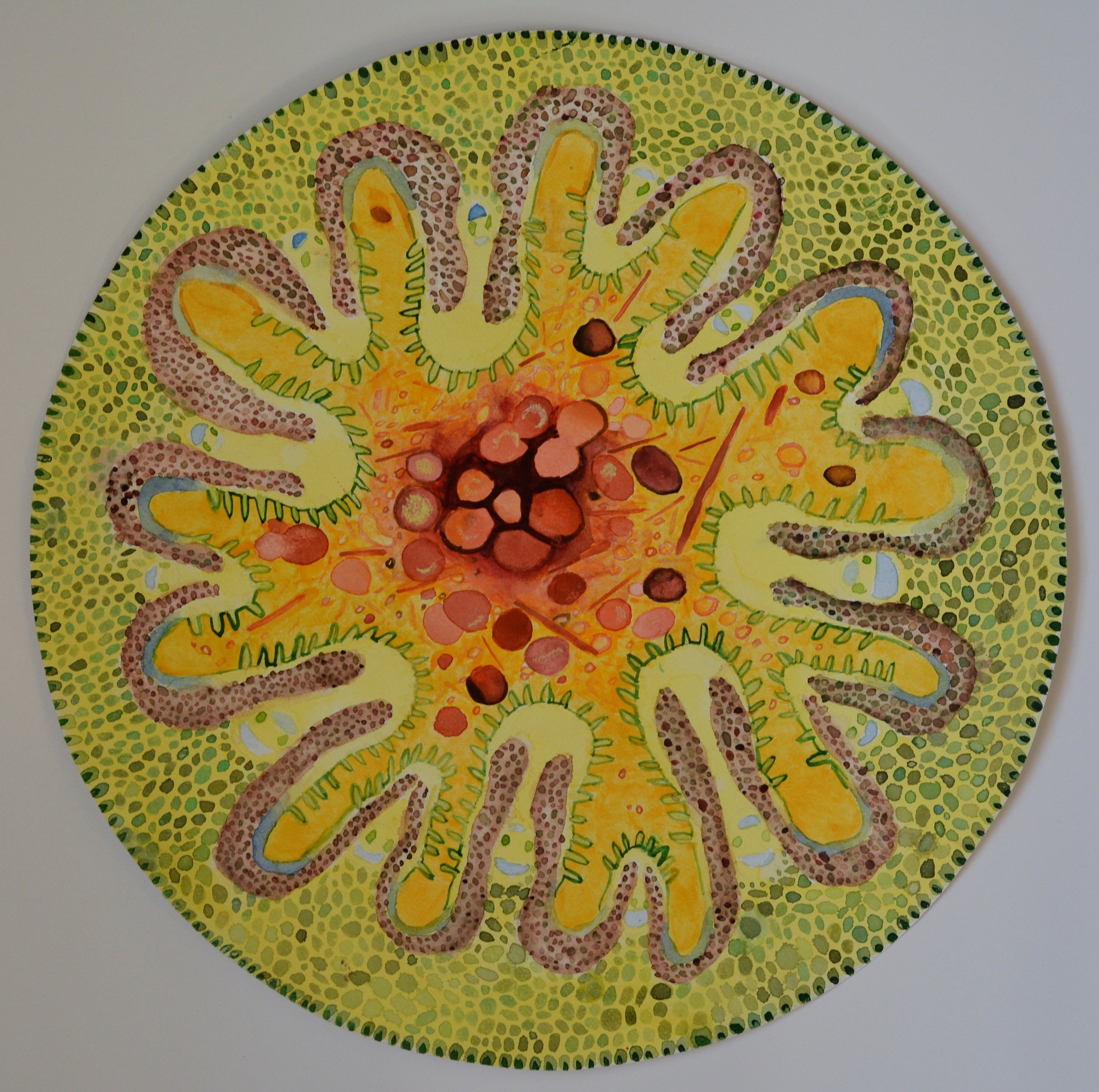Social justice lesson plan
Graphic Design Unit
Vintage Poster Project
In this project, students selected a vintage American or Soviet movie poster (mostly from the 1920s) as their inspiration. Students were asked to take a photo of themselves in the same position and with the same expression and lighting as the main character of their poster. They were then asked to come up with a title for their poster. They were now the leading stars in their own film poster. They used the same layout and design as their vintage posters, replacing the main character with a self portrait and adding their own titles. The final work is an acrylic self portrait painting on canvas board.
Color Theory Project
In this unit, students learned color theory through various painting and coloring exercises, as well as optical illusion games. They learned to mix, blend and fade colors using color pencils. They made their own color wheels using gouache paint and they created several small painting exercises where they practiced using monochromatic and complementary colors. In this project, students were asked to find colorful photographs as their reference images. They were then asked to change every color to its complementary color, while maintaining its correct value. They then painted their portraits using acrylic paint on canvas board.
School Sign Project
Students were asked to create "road signs" for the school, using simple graphic symbols cut out of black colored paper. They came up with a list of rules, regulations and advice they wish they had known when they first came to school as Freshmen. They were asked to use simple graphic images with no text to convey their messages. Students used black and orange paper to create these school signs, which were then laminated and taped around school hallways.
Art History Project
Each student selected an artist they wanted to study in depth. Students did extensive research on their chosen artists, and were asked to write one research paper and create one power point presentation on their artist, style and art movement. They were then asked to create an artwork of their own using a similar technique and style of their artist. At the end of the project, each student had to do an oral presentation in front of the class, including their power point and the completed artwork.
Still Life Drawing Lesson
Students spend a great deal of time in my Art I classes perfecting their drawing skills through still life drawings. I have a closet full of objects where students are asked to select several items in order to create an interesting still life composition. They are then asked to draw all the objects in perspective, exactly as they see them. After they become comfortable with perspective, contour line, composition and proportion, they start adding shading to their still life drawings. Using hatching and cross-hatching with drawing pencils ranging from 6H to 8B, students attempt to create the illusion of volume and texture. Through still life drawing exercises students improve both their technical drawing skills as well as their observational skills.
Exquisite Corpse Exercise
Here students 'play' a Surrealist game: The Exquisite Corpse. They fold a piece of paper in 3 equal parts. Using reference images (objects or photos), they are instructed to draw only on the top section of the folded paper. They bring their lines down, slightly past the first fold and conceal their drawings before passing the paper on to another student. The second student draws a different image on the center of the paper, using the lines left from the first student. Each student draws a section of the paper, without seeing what the previous drawing looks like. The paper is passed on to a third student who repeats the process. At the end, the paper is opened to reveal a Surrealist drawing, which is a collaboration between 3 students. The drawing is then returned to the first student who has to make it all come together (making the lines consistent, adding a background, shading, etc..). Two of the examples I show here were done in pencil and white Conte on tea stained paper, and the other two were done with pen & ink with a light watercolor and iridescent paint wash.
DAY OF THE DEAD SCRATCHBoard project
Students created their own Day of the Dead sugar skull drawings using scratchboard paper. After looking at various examples of Day of the Dead Imagery and discussing religious and secular South American iconography, students drew skulls, then added a variety of ornamental and symbolic designs to their drawings. These drawings were done in pencil first, then using a metal scratch tool, they scratched out the black layer covering the paper, to reveal the white underneath.
identity Project
Whenever we do a self portrait-project, we usually begin by arranging a photo shoot in class, where students get to have their portraits taken exactly the way they want. Once black-and-white photos are taken, students enlarge the photo using a grid system. Students draw their portraits in pencil first, then are asked to choose a non-realistic skin tone for their faces. They use mostly variations of the same color to paint their faces, separating each tone from the lightest to the darkest. They are then asked to choose a contrasting or complementary color to paint the background. After the painting is complete, they write auto-biographical poems and personal essays on identity, and later incorporate the writing into the painting. Students use acrylic paint and paint markers (for the text) on canvas board.
Petri dish watercolor project
Inspired by the world of microbiology, students used pictures of virus, bacteria, protozoa, blood cells, fungi, algae, and various other microscopic images to create these beautiful multi-layered abstract watercolors in "petri-dish" like circular paper.















































